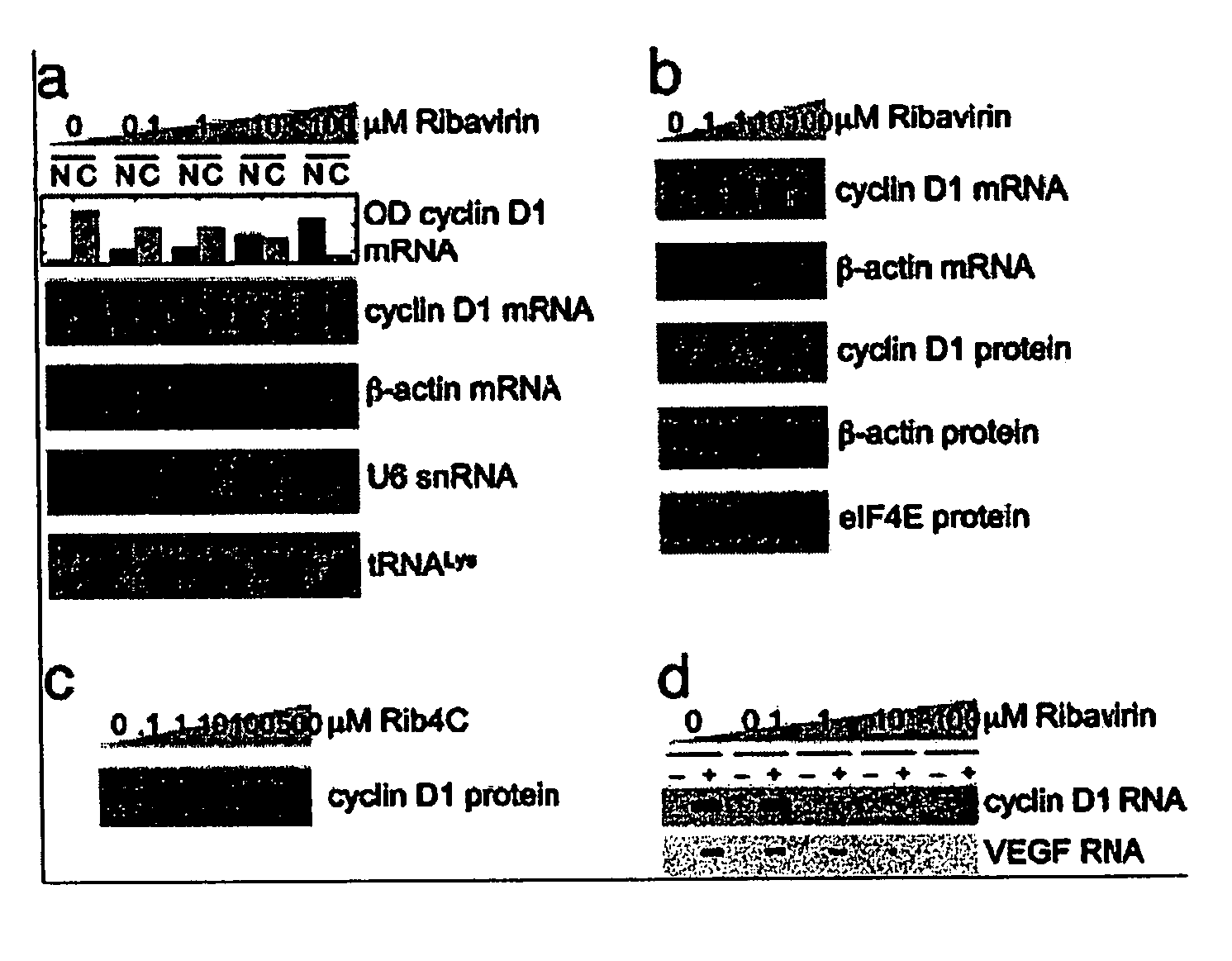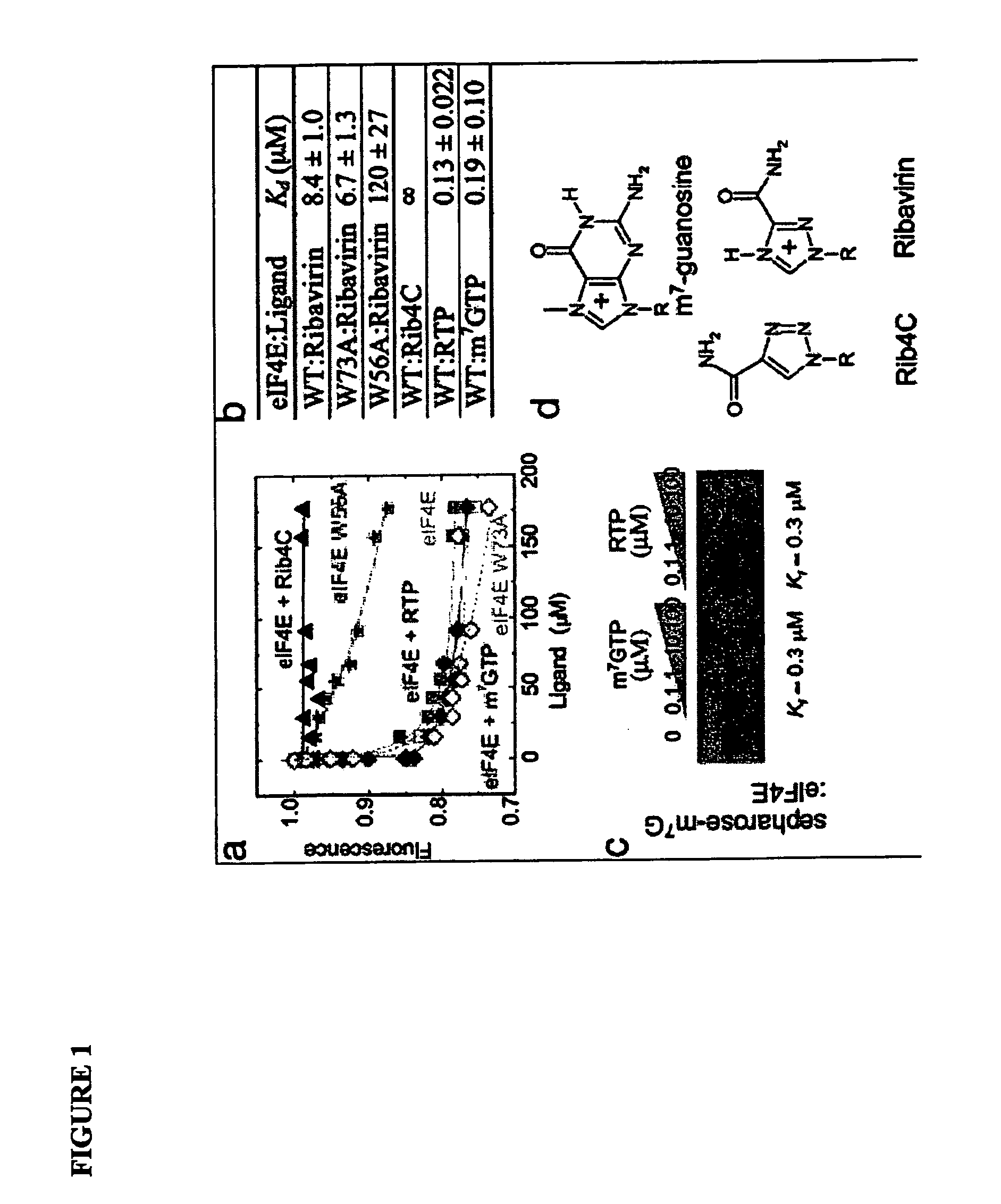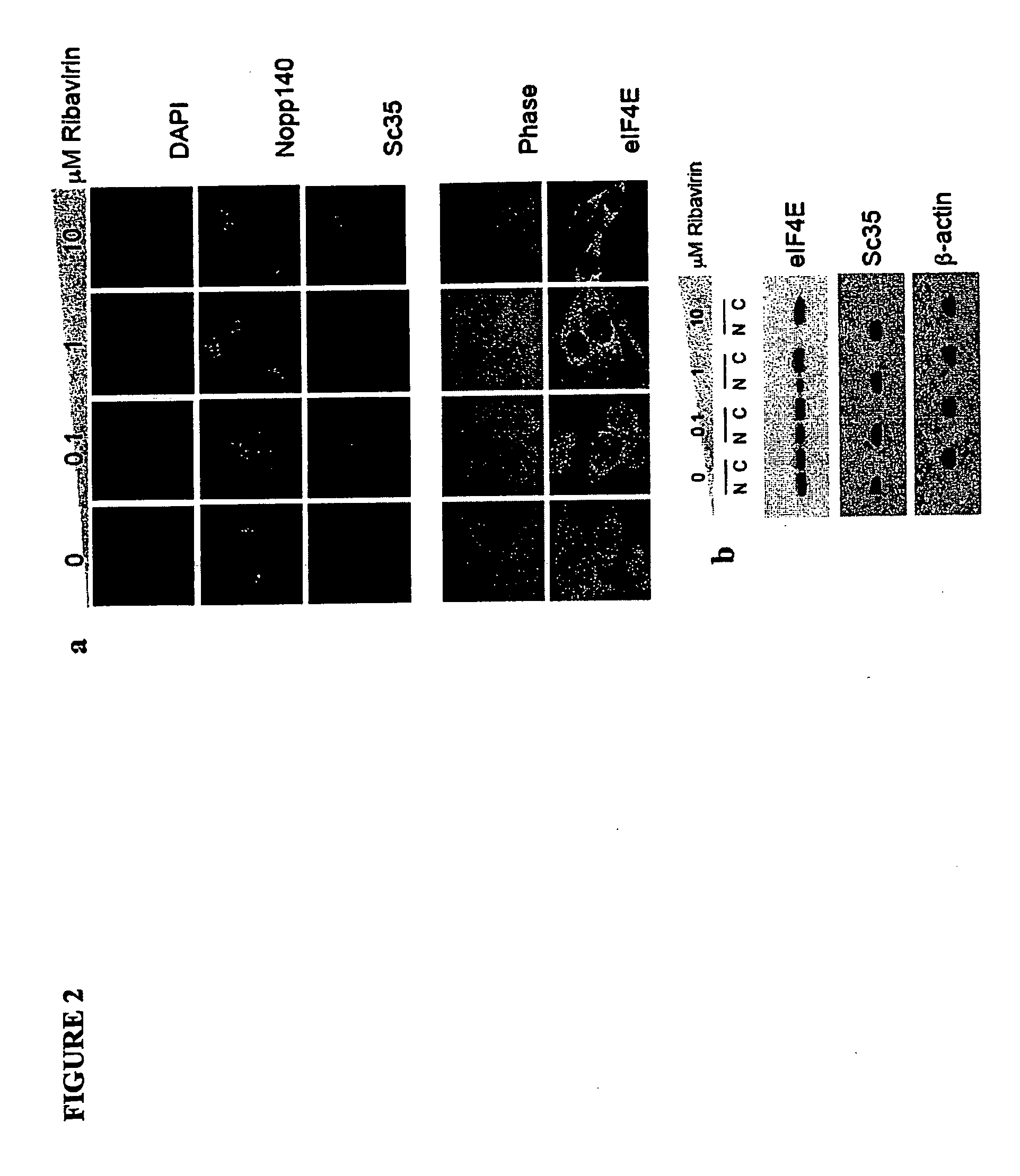Translational Dysfunction Based Therapeutics
a technology of translational dysfunction and therapeutics, applied in the field of translational dysfunction based therapeutics, can solve the problems of no method for providing enhanced efficacy and/or safety of gene therapeutic activities, no method for providing enhanced control of viral oncolysis, enhanced control of virus or vector replication, and no method for providing enhanced control of gene therapeutic activities. effect and/or safety, stratification methodologies do not provide for the enhanced detection, analysis and therapeutic monitoring of 4e regulon activity
- Summary
- Abstract
- Description
- Claims
- Application Information
AI Technical Summary
Benefits of technology
Problems solved by technology
Method used
Image
Examples
example 1
Ribavirin Suppresses eIF4E-Mediated Oncogenic Transformation by Physical Mimicry of the 7-methyl Guanosine mRNA Cap
[0537]The eukaryotic translation initiation factor eIF4E is deregulated in many human cancers, and its overexpression in cells leads to malignant transformation. Oncogenic properties of eIF4E are directly linked to its ability to bind 7-methyl guanosine of the 5′ end of the mRNA. Here, we observe that the antiviral guanosine analogue Ribavirin binds to eIF4E with micromolar affinity at the functional site used by 7-methyl guanosine mRNA cap, competes with eIF4E:mRNA binding, and, at low micromolar concentrations, selectively disrupts eIF4E subcellular organization and transport and translation of mRNAs posttranscriptionally regulated by eIF4E, thereby reducing levels of oncogenes such as cyclin D1. Ribavirin potently suppresses eIF4E-mediated oncogenic transformation of murine cells in vitro, of tumor growth of a mouse model of eIF4E-dependent human squamous cell carcin...
example 2
eIF4E Specifically Binds to Ribavirin Using the Cap-Binding Site
[0578]The mechanism of action of Ribavirin (Virazole), a triazole carboxamide ribonucleoside, has remained enigmatic since its discovery in the early 1970s. Much of the confusion stemmed from its apparent activity against a wide variety of seemingly unrelated viruses, as well as pleiotropic cellular effects dependent on concentration. Based on the similarities in the arrangement of hydrogen-bonding groups of Ribavirin and guanosine, Ribavirin was postulated to be a guanosine analog. This notion is consistent with Ribavirin's effects at millimolar concentrations on guanylyl transferases, inosine monophosphate dehydrogenase, and RNA-dependent RNA polymerases.
[0579]The prior Example sought to identify the nature of these specific effects, and thereby help to define the specific mechanism of action of Ribavirin. Using ab initio quantum mechanics, we characterized the physical properties of a variety of guanosine analogs, no...
example 3
Identification of a 100-nt Sequence From the Cyclin D1 3′UTR which Sensitizes this mRNA to eIF4E in the Nucleus and is Involved in eIF4E Mediated Cell Transformation
Abstract
[0591]The eukaryotic translation initiation factor eIF4E is a critical modulator of cellular growth with functions in the nucleus and cytoplasm. In the cytoplasm, recognition of the 5′ m7 G cap moiety on all mRNAs is sufficient for their functional interaction with eIF4E. In contrast, we have shown that in the nucleus eIF4E associates and promotes the nuclear export of cyclin D1, but not GAPDH or actin mRNAs. We determined that the basis of this discriminatory interaction is a 100-nt sequence in the 3′ untranslated region (UTR) of cyclin D1 mRNA, we refer to as an eIF4E sensitivity element (4E-SE). We found that cyclin D1 mRNA is enriched at eIF4E nuclear bodies, suggesting these are functional sites for organization of specific ribonucleoproteins. The 4E-SE is required for eIF4E to efficiently transform cells, t...
PUM
| Property | Measurement | Unit |
|---|---|---|
| pH | aaaaa | aaaaa |
| pH | aaaaa | aaaaa |
| temperature | aaaaa | aaaaa |
Abstract
Description
Claims
Application Information
 Login to View More
Login to View More - R&D
- Intellectual Property
- Life Sciences
- Materials
- Tech Scout
- Unparalleled Data Quality
- Higher Quality Content
- 60% Fewer Hallucinations
Browse by: Latest US Patents, China's latest patents, Technical Efficacy Thesaurus, Application Domain, Technology Topic, Popular Technical Reports.
© 2025 PatSnap. All rights reserved.Legal|Privacy policy|Modern Slavery Act Transparency Statement|Sitemap|About US| Contact US: help@patsnap.com



